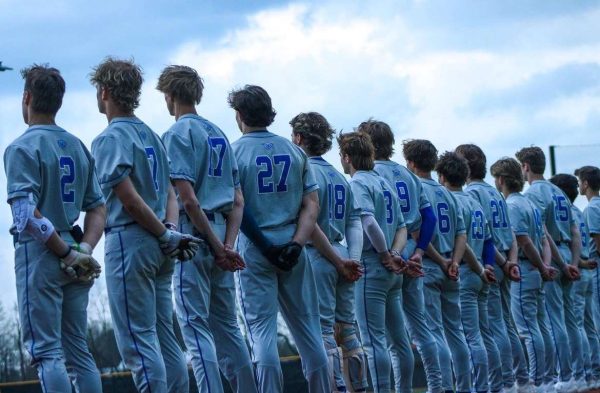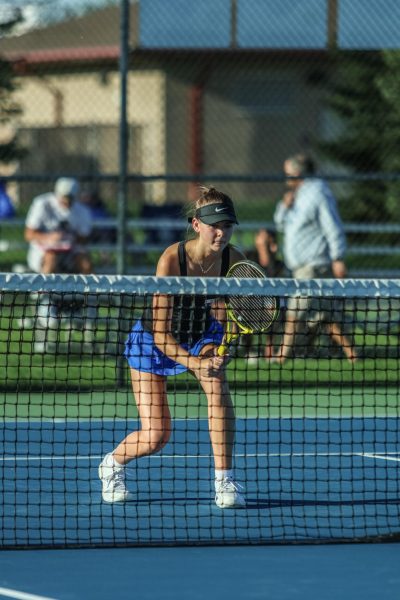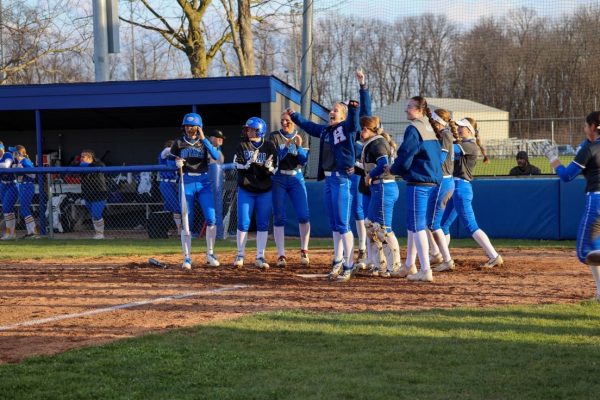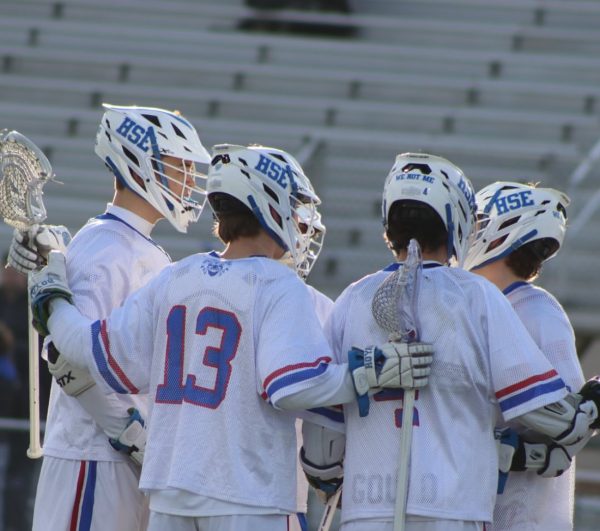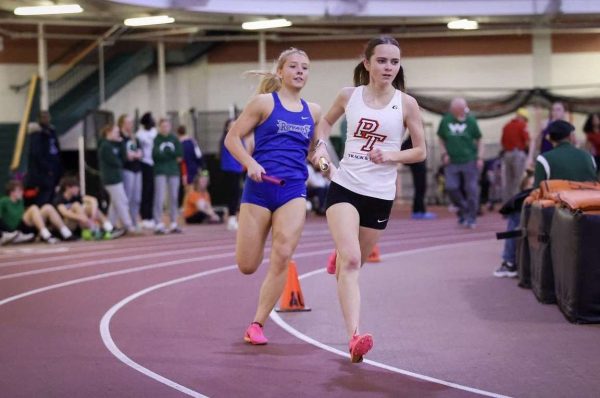Gymnastics: Chalked Up
Ellison Boyle discusses her life as a gymnast
March 3, 2022
Are you going to the gymnastics meet? Unlike with other sports, we are not asked this question often. Why? When the Olympics comes around, USA gymnastics makes headlines; but the rest of the time they gather few. Why? What truly is the sport of gymnastics? Unlike college basketball, or high school football, gymnastics is much harder to truly experience. However, to Ellison Boyle, the sport quite literally is her life. Her insights into the high-school and college level of gymnastics can deepen our understanding of the sport to help answer some of these questions.
First, what is the life of a gymnast? As it turns out, it can be quite stressful. The sport is time consuming; according to Boyle, “It was difficult to dedicate 24 hours every week to one sport.” For comparison, average sport practices are 1-2 hours and 5 days a week. This may seem like a long time, but it only adds up to 10 hours of practice. Therefore, it is hard to imagine consistently having a 24-hour practice week, year-round. As you can imagine, this extreme amount of time spent in the gym doing high impact movements had some adverse effects. “Gymnastics had lasting, negative effects on my body,” as Boyle describes, “I was always battling one injury or another.” Throughout her career, Boyle endured many stress fractures some of which were extreme enough to require surgery. This led to extra hours spent in physical therapy on top of the 24 hours spent practicing. However, despite the long hours and physical stress Boyle, “would not trade [her] experience for the world.”
What could possibly be positive from spending all your free time in a gym and the rest healing your wounds? Well, according to Boyle, plenty. “Although it was mentally, emotionally, and physically exhausting. Gymnastics has taught me the most important life lessons including time management, perseverance, personal responsibility, focus, and how to work hard.” These skills are invaluable, as they cannot be taught in a classroom. In addition to this, the hyper competitive environment of the sport can lead to becoming an elite athlete of nationwide respect. Boyle competed in level ten of the Junior Olympic Division of gymnastics. This is the highest level short of Olympic athletes. Gymnasts like Simone Biles and Sunisa Lee were molded by this division of gymnastics and now they dominate the world in the sport. This experience, not only in developing life skills but in competing with the nations best teenage gymnasts embedded Boyle with lessons that she will never forget.
In addition to this, the most committed and advanced gymnasts can find themselves competing for a collegiate team with free school as an added benefit. “The college environment is very different from the [Junior Olympics] environment,” Boyle describes, “It is much more team oriented and less extreme than level ten [Junior Olympics] but they expect perfection.” Despite these differences, gymnasts consistently strive for this goal as not only do they get to continue their passion, but they can compete for scholarships. In recent years, according to Boyle, collegiate gymnastics has grown in popularity and, therefore, received more funding. This means that more gymnasts can receive educational funding for their gymnastic expertise which can be a great advantage in life.
Despite the physical and mental stress, Boyle made clear that the sport is a phenomenal opportunity for young adults to compete in a demanding and intense sport that will leave you with unparalleled life lessons. Gymnastics is no cake walk, nor is it a side sport that is less competitive than others. There is a reason it is prime time in the Olympics, and why in recent years it may become a popular sport to watch. High School and Collegiate athlete’s passion for the sport is unparalleled as their level of commitment and dedication must be above that of other sports. Therefore, gymnastics is a sport that may intrigue your curiosity and may be worth further inquiry. – Story by Alex Boothby







